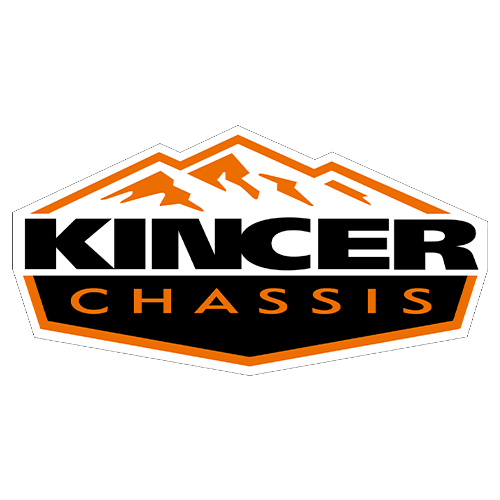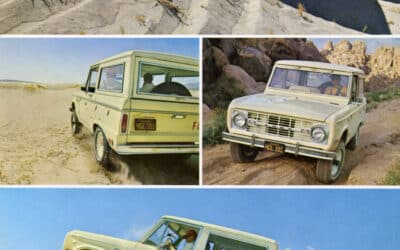The 5.0 Ford Coyote Engine is the epitome of performance, power, and prestigious engineering. With its powerful roar and impressive capabilities, it has become the engine of choice for many Mustang enthusiasts and those restoring their Classic Ford Broncos.
In this comprehensive guide, you’ll discover the Coyote Motor’s rich history, its evolutionary journey, and the secret behind its remarkable performance. You’ll also learn about its reliability, and how you can upgrade and modify your Coyote Motor for even greater performance. Let’s do a deep dive into the world of the Ford 5.0 Coyote Engine.
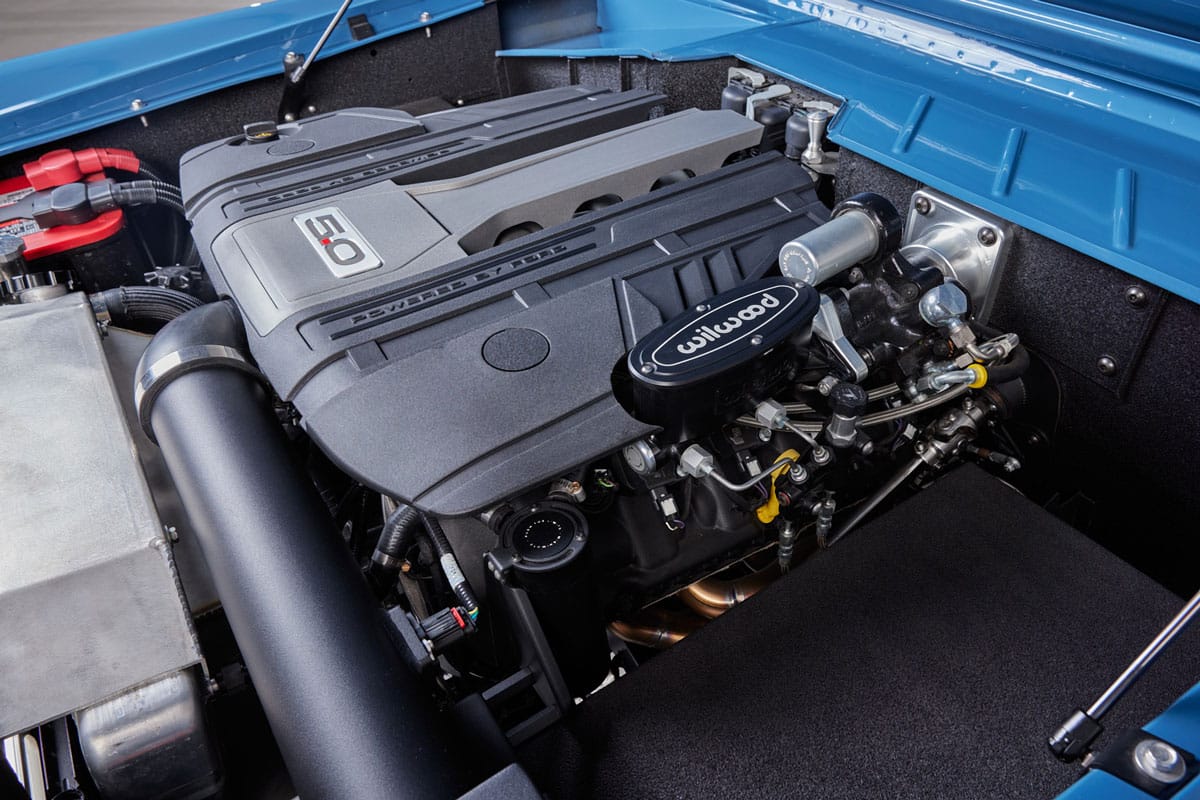
Key Takeaways
- The Gen 3 Ford Coyote Motor is a powerful and efficient 5.0L V8 engine with innovative design features for enhanced performance, fuel efficiency, and emissions.
- It has evolved through three generations since 2011, each offering improved power output and unique features such as Ti-VCT system & CTA technology.
- With regular maintenance, the Coyote Motor can offer reliable performance over long distances. Upgrades & modifications are available to maximize its potential.a
Understanding the Ford Coyote Motor
The Ford Coyote Motor, a 5.0-liter dual overhead cam V8 engine, is the heart and soul of the Ford Mustang GT and many restored Vintage Ford Broncos. Powering sports cars and trucks alike, this engine has quickly become a favorite among drivers seeking more power and is known for its impressive performance and reliability. As one of the most popular Ford engines, it continues to leave a lasting impact on the automotive industry.
Key features of the 5.0 Coyote Ford Engine include:
- 5.0-liter displacement
- Dual overhead cam design
- V8 configuration
- High-performance capabilities
- Excellent power-to-weight ratio
- Advanced fuel injection system
- Smooth and responsive throttle
First introduced in 2011, the Coyote Motor marked the beginning of an extraordinary journey that would change the landscape of power sports cars forever.
Boasting a power output ranging from 360 to 460 horsepower and a torque rating of 390 lb-ft, the Coyote Motor is one of the most powerful engines in its class. Thanks to its twin independent variable camshaft timing (Ti-VCT) and cam torque actuation (CTA), it offers improved fuel economy and reduced emissions without compromising power delivery. With its aluminum construction, the Coyote Motor is lighter and more resilient than its contemporaries.
It’s no wonder that the Coyote Motor has become a popular choice for Fox Body Mustangs and other Ford models alike.
Evolution of the Coyote Motor
Originally released in 2011, the Gen 1 Coyote Motor was a game-changer for Ford, boasting a compression ratio of 11.0:1, horsepower ratings of 412-420 hp, and torque ratings of 390 lb-ft. Unique features, such as piston oil squirters and 12mm head bolts, gave the Gen 1 Coyote Motor a robust foundation. The Coyote Motor quickly gained a reputation for its power, efficiency, and reliability, making it a popular choice for performance enthusiasts.
In 2015, the second generation of the Coyote Motor was introduced, featuring several improvements and upgrades to coincide with the all-new S550 chassis. Larger intake and exhaust valves, modified camshafts, and firmer valve springs were introduced, allowing for improved high-RPM performance. This new generation of Coyote Motors enjoyed even greater power and efficiency, further solidifying the Coyote Motor’s status as a powerhouse in the automotive world.
Key Features of the Coyote Engines
The Coyote Motor’s innovative design and advanced features set it apart from other engines in its class. Its dual overhead cam (DOHC) design allows for improved high-RPM performance, while its twin independent variable camshaft timing (Ti-VCT) system provides better fuel economy and delivers power with lower emissions.
From 2011-2017, the Coyote Motor featured a sequential multi-port fuel injection system with an electronic throttle body. In 2018, this system was upgraded to a combined direct injection and port injection system, offering even more precise fuel delivery and improved efficiency.
With an impressive power output, lightweight construction, and advanced fuel injection technology, the Coyote Motor has become synonymous with power, performance, and engineering excellence.
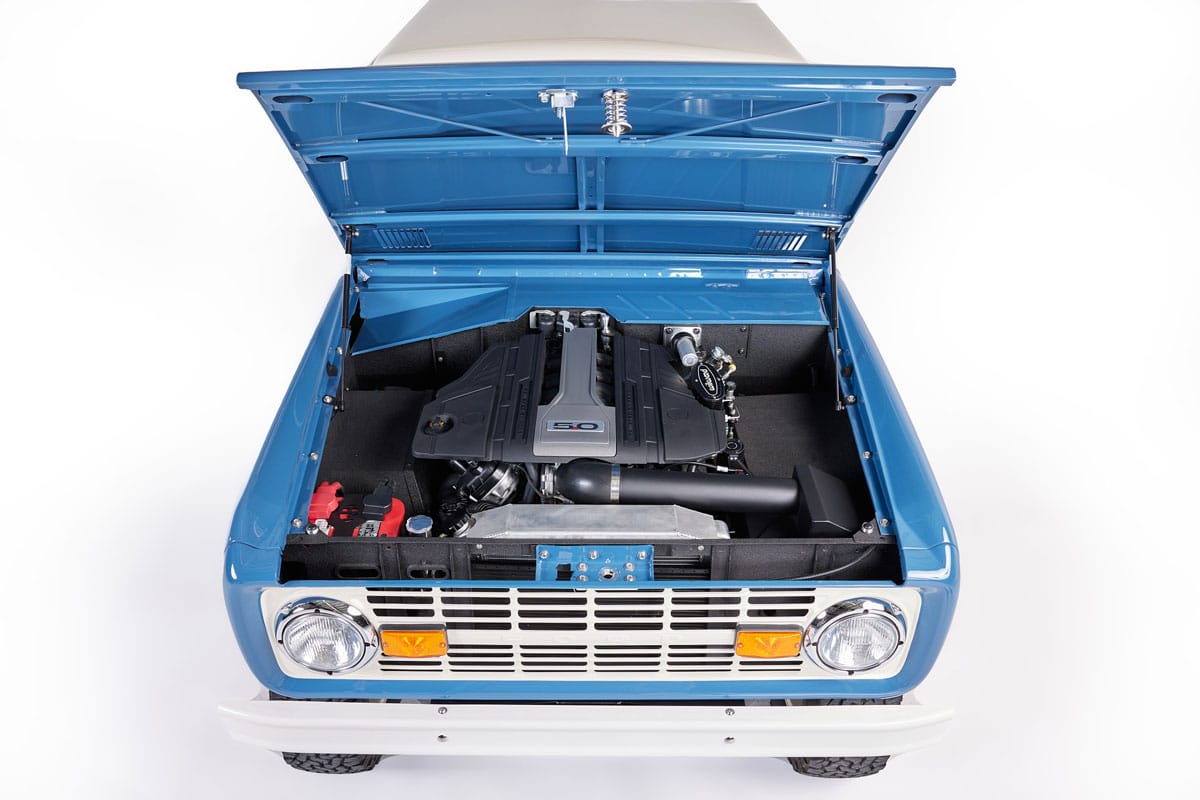
Coyote Motor Generations: Differences and Upgrades
Throughout its evolution, the Coyote Motor has undergone several significant updates and upgrades, resulting in four distinct generations: Gen 1 (2011-2014), Gen 2 (2015-2017), Gen 3 (2018-2023), Gen 4 (2024). Each generation brought with it new advancements in power, efficiency, and technology, pushing the limits of what the Coyote Motor could achieve.
Next, we will explore the specifics of each generation, examining the distinct differences and upgrades that have evolved the Coyote Motor into the modern powerhouse it is today.
Gen 1 Coyote Motor (2011-2014)
The Gen 1 5.0 Coyote engine made its debut in 2011 and quickly gained a reputation for its power and reliability among other coyote engines. With a horsepower rating of 412-420 hp and a torque rating of 390 lb-ft, this engine was no slouch in the performance department. Its unique features, such as twin independent variable cam timing (Ti-VCT) and cam torque actuation (CTA), allowed for improved power, fuel economy, and emissions.
Despite its impressive performance, the Gen 1 Coyote Motor did have a few reported issues, such as connecting rod bearing problems, which were addressed in subsequent generations. Overall, the Gen 1 Coyote Motor served as a solid foundation for the future advancements that would come in the Gen 2 and Gen 3 iterations.
Gen 2 Coyote Motor (2015-2017)
In 2015, the Gen 2 Coyote Motor hit the scene with several updates and upgrades to coincide with the all-new S550 chassis. Among the most notable improvements were larger intake and exhaust valves, modified camshafts, and firmer valve springs for improved performance at high RPMs. These enhancements allowed the Gen 2 Coyote Motor to maintain an RPM of 7,500, which is 500 RPM higher than its predecessor.
Also, the Gen 2 Coyote Motor introduced charge motion control valves (CMCV) to the intake manifold, which increased tumble and swirl in the combustion chamber, leading to a faster burn, improved fuel efficiency, and lower emissions. This generation of Coyote Motors demonstrated Ford’s commitment to continually innovate and improve upon their already impressive engine platform.
Gen 3 Coyote Motor (2018-2023)
With the arrival of the Gen 3 Coyote Motor in 2018, Ford took the engine to new heights in terms of power, efficiency, and technology. One of the most significant upgrades in the Gen 3 Coyote Motor was the addition of a high-pressure direct-injection system, which provided more precise fuel delivery and improved efficiency compared to the earlier multi-port fuel injection system.
Additionally, the Gen 3 Coyote Motor featured a high-flow cylinder head and increased compression ratio for increased power output. With a horsepower rating of 460 hp and a torque output of 420 lb-ft, the Gen 3 Coyote Motor stands as the most powerful and advanced iteration of this iconic engine to date.
Gen 4 Coyote Motor (2024)
The Gen 4 Coyote engine is capable of making up to 500 horsepower! This Mustang engine will have 486+hp and 418 lb-ft of torque in the GT with an active-valve performance exhaust system while the Dark Horse will have around 500 horsepower.
| GEN 1 COYOTE | GEN 2 COYOTE | GEN 3 COYOTE | GEN 4 COYOTE | |
|---|---|---|---|---|
| 2011 – 2014 | 2015 – 2017 | 2018 – 2023 | 2024+ | |
| HORSEPOWER | 412 / 420 | 435 | 460 | 486 / 500 |
| DISPLACEMENT | 4.951 L | 4.951 L | 5.035 L | 5.035 L |
| COMPRESSION | 10.5:1 | 11.0:1 | 12.0:1 | 12.0:1 |
| BORE | 92.2 MM | 92.2 MM | 93 MM | 93 MM |
| STROKE | 92.7 MM | 92.77 MM | 92.7 MM | 92.7 MM |
| Fuel System | Sequential Multiport Fuel Injection | Sequential Multiport Fuel Injection | Direct Fuel Injection | Direct Fuel Injection |
| Valvetrain | Dual Overhead Camshaft (DOHC), 4 valves/cylinder | Dual Overhead Camshaft (DOHC), 4 valves/cylinder | Dual Overhead Camshaft (DOHC), 4 valves/cylinder | Dual Overhead Camshaft (DOHC), 4 valves/cylinder |
| Exhaust System | Standard exhaust with headers | Improved exhaust with performance headers | High-performance exhaust system | High-performance exhaust system |
| Intake System | Cold air intake | Upgraded air induction | Advanced air intake system | Advanced air intake system |
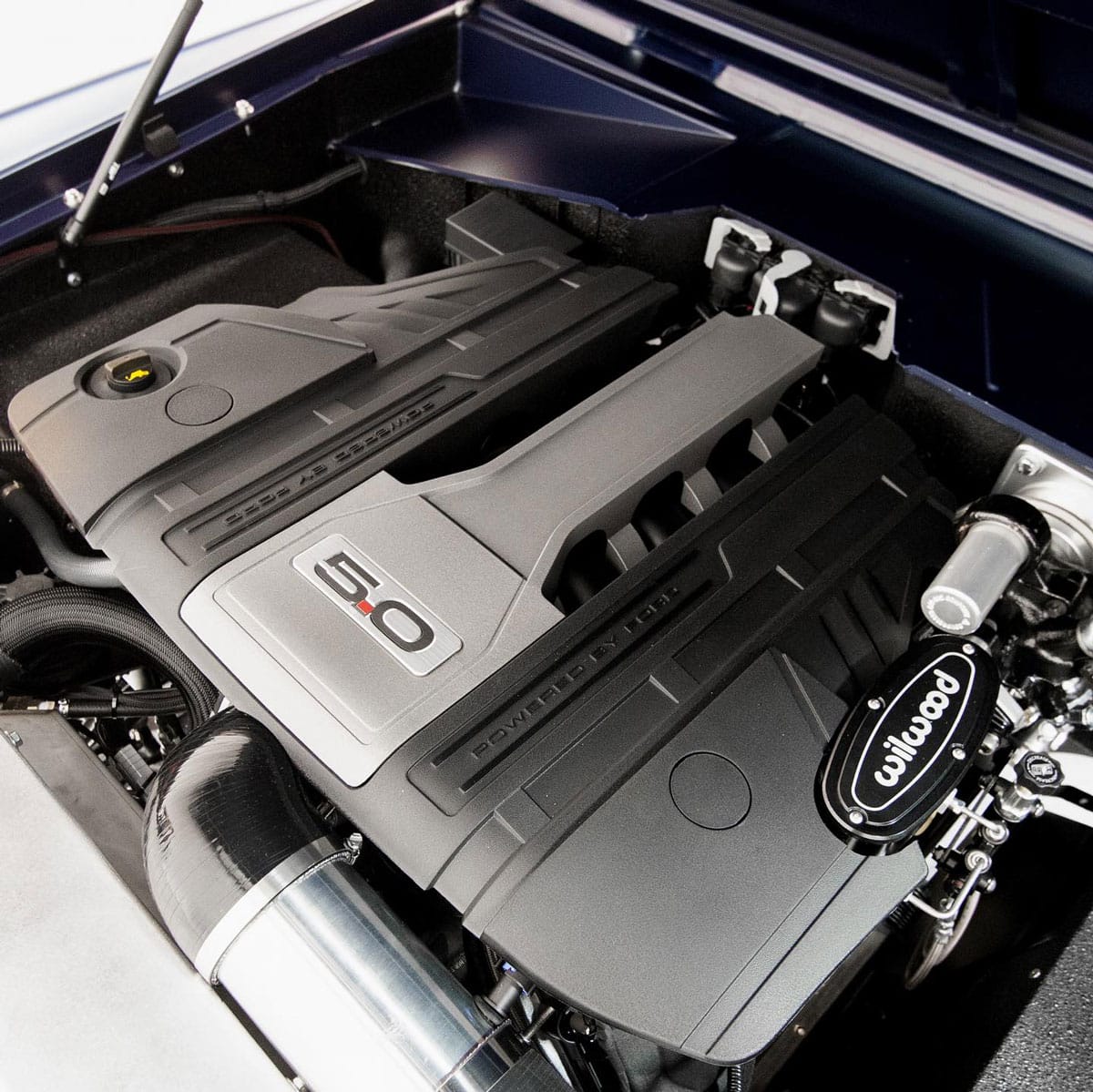
Performance Variants of the Coyote Motor
For those who crave even more power and performance from their Coyote Motor, there are several high-performance variants available, including the Road Runner and Voodoo engines. These engines offer significant power upgrades and unique features that set them apart from their standard Coyote Motor counterparts.
Next, we will examine these high-performance variants in more depth, highlighting their unique features and impressive capabilities.
The Road Runner Engine
The Road Runner engine is a high-performance variant of the Coyote Motor, featuring:
- Upgraded internals
- Increased RPM capabilities
- Forged steel crankshaft
- Forged aluminum pistons
- CNC-ported cylinder heads
- High-flow intake manifold
- Revised camshaft with a high-lift exhaust profile
The Road Runner engine is designed to deliver exceptional performance and power. With a torque rating of 380 lb-ft and a horsepower rating of 444 hp, the Road Runner engine is a formidable force in the world of performance engines.
The compression ratio of the Road Runner engine is 11.0:1, which allows for impressive power delivery and efficiency. This high-performance variant of the Coyote Motor is well-suited for those seeking to push the limits of their vehicle’s capabilities and achieve an unparalleled driving experience.
The Voodoo Engine
The Voodoo engine is a 5.2L variant of the Coyote Motor that features a flat-plane crankshaft, providing increased power output compared to its standard Coyote Motor counterpart. With a 5.2-liter displacement, dual overhead camshaft (DOHC) design, and a naturally aspirated configuration, the Voodoo engine produces 526 horsepower and 429 lb-ft of torque. This powerful engine is used in the Ford Mustang Shelby GT350 and GT350R models, offering drivers a thrilling and exhilarating driving experience.
The use of a flat-plane crankshaft in the Voodoo engine offers a lighter rotating mass, enhanced exhaust flow, and faster revving capabilities, resulting in improved performance and a distinct exhaust note. With its increased power output and unique design features, the Voodoo engine is a perfect choice for those seeking a high-performance engine with a distinct character and exceptional capabilities.
The Predator
The Ford Predator is a beast of an engine that could bring a vintage Ford Bronco to life with unprecedented power. This 5.2-liter supercharged V8 engine, primarily used in sports cars like the Mustang Shelby GT500, is renowned for its impressive specs. The Predator delivers a heart-pounding 760 horsepower and 625 lb-ft of torque, making it one of the most powerful engines Ford has ever produced. In addition, the engine’s solid block design not only helps in reducing weight but also enhances overall strength.
Weighing in at around 536 lbs excluding Front End Accessory Drive (FEAD) components, this engine is a marvel of engineering. Its power output reaches its peak at 7,300 rpm, maintaining a steady torque from 3,000 rpm to redline. With such extraordinary performance, installing the Predator in a vintage Bronco would undoubtedly offer a thrilling driving experience, transforming the classic SUV into a high-performance vehicle.
The Predator is what we put in the Jay Leno Bronco at SEMA 2019. We’ve driven anything like it!
Reliability of the Coyote Motor
We’re often asked if a classic Bronco is reliable. Dependability often depends on what engine you have in your Bronco! While the Coyote Motor is known for its impressive power and performance, we’ll also touch on its overall reliability and longevity.
Overall Reliability and Longevity
The Coyote Motor offers reliable long-term durability and consistently high performance. The typical lifespan of the Coyote Motor under standard operating conditions ranges between 100,000 and 250,000 miles, contingent upon regular maintenance and quality of care. In comparison to other engines in its class, the Coyote Motor has a positive standing for longevity, with some engines lasting up to 250,000 miles or more.
To ensure the Coyote Motor’s performance and longevity, regular maintenance tasks are essential. These tasks include:
- Oil changes
- Checking and topping off fluids
- Inspecting and replacing air filters
- Checking belts and hoses
- Tire rotation
By performing these routine maintenance tasks and addressing any potential issues, you can keep your Coyote Motor running in peak condition and enjoy its remarkable performance for many years.
Upgrading and Modifying Your Coyote Motor
For those seeking to extract even more power and performance from their Coyote Motor, there are numerous upgrades and modifications available. From induction and intake upgrades to exhaust system enhancements and even supercharging, there are many ways to enhance the power and capabilities of your Coyote Motor.
This section will highlight some popular upgrades and modifications that can maximize the potential of your Coyote Motor.
Induction and Intake Upgrades
Induction and intake upgrades refer to modifications made to the intake system of a vehicle for the purpose of improving performance and increasing horsepower. These upgrades may include cold air intakes and upgraded intake manifolds. Brands like JLT, ROUSH, Ford Performance, Steeda, and PMAS offer highly regarded cold air intakes for Coyote motors, which can provide increased airflow and improved performance.
Upgrading the intake manifold on a Coyote Motor can yield several benefits, including:
- Increased power and efficiency
- Improved air supply to the engine, resulting in increased horsepower
- Enhanced volumetric efficiency, allowing the engine to breathe more efficiently and improve overall performance
- Reduced weight and improved fuel efficiency
By focusing on induction and intake upgrades, you can enhance the performance of your Coyote Motor and enjoy a more exhilarating driving experience.

Photo Credit : Vintage Broncos
Exhaust System Enhancements
Exhaust system enhancements refer to modifications made to a vehicle’s exhaust system, such as headers, cast iron exhaust manifolds, and cat-back systems, to enhance its power and sound. Upgrading to a new exhaust system, such as axle-back or cat-back exhausts, is recommended for a Ford Coyote Motor. Brands like Roush Performance offer a range of options, including headers and mufflers, which can improve high-end horsepower.
Installing a cat-back system upgrade on a Ford Coyote Motor can yield multiple benefits, including:
- Improved exhaust flow
- Increased horsepower and torque
- Enhanced fuel economy
- More aggressive exhaust note
- Reduced backpressure
- Improved overall performance due to increased air intake
By focusing on exhaust system enhancements, you can further unlock the power and performance of your Coyote Motor.
Supercharging Your Coyote Motor
Supercharging is another method to increase the power and performance of your Coyote Motor. A supercharger is a device that compresses the intake air and supplies additional air to the engine, thus increasing the power output. Supercharging your Coyote Motor can result in a considerable increase in horsepower and a more responsive engine, although it may come with some drawbacks like decreased fuel efficiency and additional stress on the engine and transmission.
However, for those seeking the ultimate in power and performance, supercharging can be an attractive option. Brands like Roush and Whipple offer supercharging kits that can help you achieve impressive power gains and transform your Coyote Motor into a true powerhouse. With proper planning and consideration of other performance mods such as cold air intakes, tuners, and exhaust systems, supercharging your Coyote Motor can result in an unparalleled driving experience.
Video by PopFizz
Coyote Swapping: What You Need to Know
Coyote Swapping is the process of replacing a vehicle’s original engine with a Ford Coyote engine, offering increased power, performance, and versatility. This modification has become popular among car enthusiasts, Mustang aficionados, and Classic Ford Bronco owners but it also comes with its own set of challenges and considerations.
This section will cover popular vehicle models for Coyote Swaps and discuss the challenges and considerations related to this type of modification.
Popular Models for Coyote Engine Swaps
One popular model for Coyote Swaps is the vintage Ford Bronco, whose capabilities and on-road performance can be greatly enhanced by the addition of a Coyote Motor. Vintage Bronco aficionados will be thrilled with the Coyote engine’s power, fluidity, and dependability, making it an ideal fit for this iconic American 4×4.
However, a successful Coyote Swap in a Bronco requires several components, such as:
- Coyote Motor Mounts designed for the Bronco engine perches
- Front-drive accessory kits
- Exhaust systems
- Fuel systems
- Engine control modules
- Wiring harnesses
Additionally, custom driveshafts may be required due to different driveshaft lengths, and different transmission crossmembers, shifter solutions, and an upgraded radiator may be needed. With the right components and expertise, a Coyote Swap can transform a vintage Ford Bronco into a modern powerhouse. We offer everything you need to get your upgraded Coyote engine into your Classic Ford Bronco.
Challenges and Considerations
When undertaking a Coyote Swap, there are several challenges and considerations to keep in mind. The Coyote engine’s physical size can present a challenge for classic vehicles, and custom modifications such as firewall, core support, and inner fender modifications may be necessary to accommodate the new engine. Additionally, wiring and integrating the engine controls and sensors can increase the complexity of the swap.
The cost of a Coyote Swap is another factor to consider. The range can vary depending on the engine chosen, labor costs, and any additional components needed. However, for many enthusiasts, the benefits of increased power, performance, and versatility make the Coyote Swap a worthwhile investment.
Summary
In conclusion, the Ford Coyote Motor offers an impressive combination of power, performance, and reliability, making it a popular choice among car enthusiasts and Mustang aficionados alike. With its rich history, innovative features, and multiple generations and performance variants, the Coyote Motor presents numerous opportunities for customization and upgrading.
Whether you’re looking to enhance the performance of your existing vehicle or embark on a Coyote Swap, the Coyote motor is a versatile and powerful engine that is sure to exceed expectations and deliver an unparalleled driving experience.
